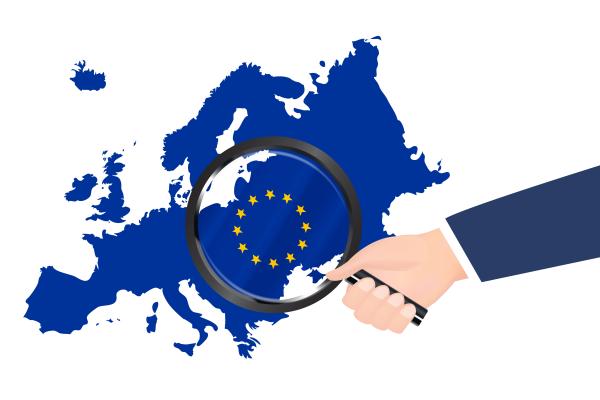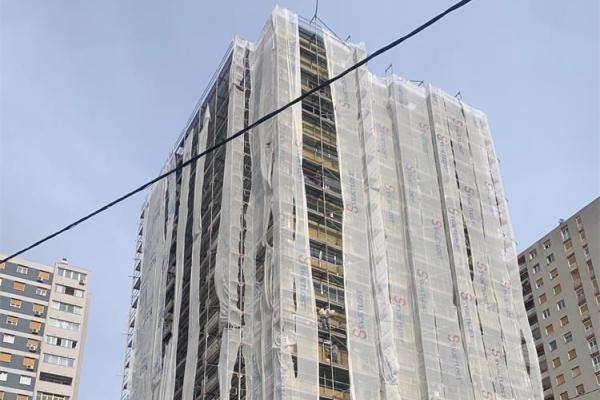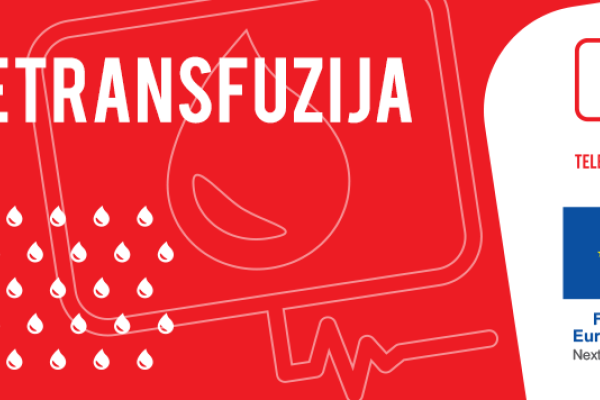Following the unprecedented crisis caused by the COVID-19 pandemic, Croatia’s recovery and resilience plan has responded to the urgent need to foster a strong recovery, while making Croatia’s economy and society more resilient and future ready. In response to the energy market disruption caused by Russia's invasion of Ukraine, the Commission launched the REPowerEU Plan. The Recovery and Resilience Facility is at the heart of its implementation and its funding. Under REPowerEU, EU countries are updating their recovery and resilience plans with new measures to save energy and diversify the EU’s energy supplies.

Green transition
Focusing on green technologies and capacities - sustainable mobility, energy efficiency and renewables, climate change adaptation; circular economy; and biodiversity.
Policies for the next generation
Improving access to and the quality of general, vocational, and higher education; focusing on digital education, early childhood education and care; supporting youth employment.
Smart, sustainable, inclusive growth
promoting entrepreneurship, competitiveness, industrialisation; improving the business environment; fostering research, development and innovation, supporting small- and medium-sized businesses.
Digital transformation
Promoting the roll-out of very high-capacity networks, the digitalisation of public services, government processes, and businesses, in particular SMEs; developing basic and advanced digital skills; supporting digital-related R&D and the deployment of advanced technologies.
Social and territorial cohesion
Improving social and territorial infrastructure and services, including social protection and welfare systems, the inclusion of disadvantaged groups; supporting employment and skills development; creating high-quality, stable jobs.
Health and economic, social and institutional resilience
Improving the resilience, accessibility and quality of health and long-term care, including measures to advance their digitalisation; increasing the effectiveness of public administration systems.
The map exclusively serves information purposes and is not an exhaustive database of projects supported by the Recovery and Resilience Facility. It does not reflect the distribution of the projects funded by the Recovery and Resilience Facility across the European Union, nor across different geographical areas or sectors within EU Member States. The RRF funding amounts shown for measures are based on the initial cost estimates included in the recovery and resilience plans.
Furthermore, the projects showcased are without prejudice to any future assessment by the Commission in the context of verifying the satisfactory fulfilment of milestones and targets under Regulation (EU) 2021/241 establishing the Recovery and Resilience Facility.
Country snapshot

The country snapshot illustrates some of the most iconic and impactful projects included in the Croatian Recovery and Resilience Plan that will bring positive change for EU citizens, businesses and the EU at large.
The reforms and investments in Croatia's plan are helping it to become more sustainable, resilient and better prepared for the challenges and opportunities of the green transition and digital transition. Following Council approval of Croatia’s plan on 08 December 2023, Croatia’s recovery and resilience plan was updated on 08 December 2023 also to introduce a REPowerEU chapter.
*This value includes also the part of the plan which is financed with national resources
- 157 investment streams and 78 reforms
- 39% of the plan will support climate objectives
- 20% of the plan will foster the digital transition.
The transformative impact of Croatia’s plan is the result of a strong combination of reforms and investment which address the country’s specific challenges. The reforms address bottlenecks to lasting and sustainable growth, while investments are targeted to accelerate the transition towards a more sustainable, low-carbon and climate-resilient economy, to support post-earthquake recovery, to maximise the benefits of the digital transformation and to ensure social cohesion.
All measures have to be implemented within a tight time frame, as the Regulation establishing the Recovery and Resilience Facility requires all milestones and targets within the national plans to be completed by August 2026.
REPowerEU measures in Croatia’s plan
Croatia's REPowerEU chapter is worth €2.9 billion. It includes one new reform, four scaled-up reforms, as well as five new and three scaled-up investments drawing on existing measures. The chapter also covers three existing investments, including one scaled-up investment, transferred from the original plan.
To finance this increased ambition, Croatia has asked for a share of its Brexit Adjustment Reserve to be transferred to the plan, amounting to €7.2 million. These funds would be added to Croatia’s REPowerEU grant of €269 million.
Key measures for REPowerEU
REPowerEU measures in Croatia’s modified plan will help deliver on the REPowerEU Plan's objectives to make Europe independent of Russian fossil fuels well before 2030.
The new reform aims at increasing green skills and competences in the construction sector for non-EU workers, while the scaled-up reforms encourage the uptake of renewable energy sources by introducing a new self-consumption system, envisage new activities contributing to raising citizens' awareness on the green transition and provide additional funds for the development of additional green urban renewal strategies.
The new investments will increase the transmission and distribution capacities of the electricity network, establish a hydrogen-based economy through the North Adriatic Hydrogen Valley, strengthen the use of renewable energy sources in transport and heating, expand the capacity of the LNG Terminal on the Island of Krk and strengthen the gas transmission network towards Slovenia and Hungary. The scaled-up investment aims to support sustainable transport, the energy efficiency and post-earthquake reconstruction of buildings and energy poverty.
Croatia has decided to scale up the investment on procurement of alternative-fuel-powered vehicles for public urban and suburban regular transport with additional EUR 100 mln. This will allow increasing the number of purchased alternative-fuel powered buses (electric and hydrogen) from 70 to 173. In addition, the investment includes the completion of one innovative hydrogen energy unit for powering electric locomotives located in a separate wagon (HERMES). Since the HERMES unit would allow electrical locomotives to operate in areas where the rail tracks are not electrified, the project represents an important step in modernisation of Croatia railways.
This investment will have a long-lasting impact since it will contribute to the decarbonisation of the transport sector, will reduce dependency on fossil fuels, and improve air quality in urban areas.
Green transition
In the area of climate and environmental policies, Croatia faces a challenge of post-earthquake reconstruction and energy renovation of buildings, increasing the share of renewable energy and energy efficiency, improving the waste and water management and making mobility more sustainable and innovative. Preserving biodiversity and ecosystems and transitioning to green jobs and the circular economy are also high on the agenda.
Key measures for the green transition
- The plan supports the green transition through investment of €1,978 million in energy efficiency and post-earthquake reconstruction of buildings
- €728 million will be invested in sustainable mobility, notably in upgrading railway lines, autonomous electric taxis with supporting infrastructure adapted for people with disabilities, installing charging stations for electric vehicles and introducing zero-emission vehicles and vessels.
- The plan allocates €658 million to low-carbon energy transition through modernising energy infrastructure, supporting investments for the production of advanced biofuels and renewable hydrogen and financing innovative carbon capture and storage projects.
- €542 million will be invested in supporting businesses for green transition and energy efficiency, supporting their projects aimed at boosting the green economy, sustainable tourism and investing in green technologies.
The modified plan, including the REPowerEU chapter, retained a strong focus of the plan on the green transition, devoting 39% of the available funds to measures that support climate objectives (down from 40% in the original plan).

The goal of the investment is to foster the green transition and decarbonisation of buildings by reducing energy consumption for heating in multi-apartment and public sector buildings.
- Project locations
- Croatia
Digital transition
Digital challenges for Croatia include the digitalisation of public administration, the provision of online public services and increasing fixed and wireless digital connectivity to facilitate investment in digital infrastructure in remote rural areas that are lagging behind in terms of gigabit connectivity services.
Key measures for the digital transition
- €283 million investment in digital transition of the public administration through digitalisation of the justice system, deployment of the Digital Identity Card and creation of a one-stop-shop for all public administration’ online services.
- €130 million will be invested in increasing national broadband coverage with gigabit connectivity in rural areas and construction of electronic communications infrastructure for 5G network thereby increasing the digital connectivity of rural areas
- €84 million support for the digitalisation of higher education through investing in e-learning and digital teaching tools.
The modified plan retained the focus of the plan on the digital transition, devoting 20% of the available funds to measures that support digital objectives (same as in the original plan).

With EUR 1.6 million from the Croatian Recovery and Resilience plan, this measure digitalised the transfusion diagnostic process by enabling remote interpretation of pre-transfusion and prenatal tests.
- Project locations
- Croatia
Economic and social resilience
Key challenges for Croatia’s economy include low employment and activity rates, burdensome and complex business environment, low efficiency and high fragmentation of public administration, judiciary, fragmented and ineffective social protection system and the low quality of education. These challenges weigh on potential growth and employment.
Key measures in reinforcing economic and social resilience
- €277 million investment for redesigning active labour market policies to boost employment and self-employment, reskilling and upskilling and improving the provision and adequacy of social benefits and services.
- €1,995 million will be invested in education and research, including by improving access to early childhood education and care.
- €739 million will be allocated to measures to improve the business environment through reducing administrative burdens, lowering regulatory requirements for professional services, and increasing access to financing for businesses.
- Support increasing the efficiency of the public sector and the justice system with €200 million.
The objective of this investment is to support access to early childhood education and care in Croatia.
- Project locations
- Croatia
ANNUAL EVENTS
Annual events facilitate the exchange of views on the state of implementation of the Recovery and resilience plans, while ensuring close cooperation between all stakeholders and providing a platform to discuss interlinks between the Plans and other Union programmes.
More information on Annual events held in Croatia can be found here
EUROPEAN SEMESTER
Croatia’s plan is consistent with the challenges and priorities identified in the European Semester, the annual cycle of coordination and monitoring of each EU country’s economic policies. For a detailed explanation of the European Semester see the following link: The European Semester explained | European Commission (europa.eu)
National recovery and resilience website
Original Recovery and Resilience Plan (July 2021)
Original Recovery and Resilience Plan (July 2021)
Documents
Commission Staff Working Document: Analysis of the recovery and resilience plan of Croatia
Press Material
Press release: "European Commission endorses Croatia's plan"
Factsheet: Croatia’s recovery and resilience plan
Questions and answers: European Commission endorses Croatia's plan
Further Information
Presentation to the Council of Croatia’s recovery and resilience plan
Summary of the assessment of the Croatian recovery and resilience plan
Updated Recovery and Resilience Plan (2023)
Documents
Press Material
Pre-financing
Press release: "European Commission disburses €818 million in pre-financing to Croatia"
First Payment Request
Documents
Preliminary assessment of the first payment request of Croatia
Commission implementing Decision on the authorisation of the first disbursement to Croatia
Press Material
Q&A on Croatia's first payment request
Daily News: Commission disburses first payment to Croatia
Second Payment Request
Documents
Preliminary assessment of the second payment request of Croatia
Commission implementing Decision on the authorisation of the second disbursement to Croatia
Press Material
Q&A on Croatia's second payment request
Daily news: Commission disburses second payment to Croatia
Third Payment Request
Documents
Preliminary assessment of the third payment request of Croatia
Commission implementing Decision on the authorisation of the third disbursement to Croatia
Press Material
Daily news: Commission receives third payment request from Croatia
Fourth Payment Request
Documents
Preliminary assessment of the fourth payment request of Croatia
Press Material
Fifth Payment Request
Documents
Preliminary assessment of the fifth payment request of Croatia
Press Material

